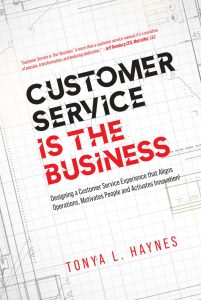- Homepage
- Customer Service
- Turning Customer Feedback Into Action: Strategies for Continuous Improvement
Turning Customer Feedback Into Action: Strategies for Continuous Improvement
In the world of business, customer feedback is a goldmine of insights, offering a direct line to what clients truly think and need. Turning this feedback into actionable improvements is essential for driving growth and enhancing the customer experience. Read More
Understanding the Value of Customer Feedback
Customer feedback is more than just comments or ratings; it’s a valuable source of information about what’s working and what needs improvement. Whether it’s positive or negative, feedback provides a clear picture of customer perceptions and expectations. By recognizing its importance, you set the stage for meaningful changes that align with customer desires.
Collecting and Analyzing Feedback
Begin by establishing robust channels for gathering customer feedback. This could include surveys, social media, online reviews, and direct interactions with customer service. Make sure these channels are easily accessible and that feedback is encouraged regularly.
Once you’ve collected feedback, the next step is thorough analysis. Look for common themes, patterns, and recurring issues. Identify areas where customers consistently express satisfaction or dissatisfaction. This analysis will highlight the key areas requiring attention and improvement.
Setting Clear Objectives
With a clear understanding of the feedback, define specific objectives for improvement. These objectives should be aligned with the identified issues and focus on enhancing the overall customer experience. For example, if feedback indicates a delay in service delivery, your objective might be to streamline the process to ensure faster delivery times.
Developing an Action Plan
Creating an actionable plan is crucial for translating objectives into concrete steps. Begin by prioritizing the areas that require immediate attention based on the impact on customer satisfaction. Develop strategies and initiatives that address these priorities. Assign responsibilities to team members and establish timelines for implementing changes.
Ensure that the action plan is realistic and achievable. It should include clear milestones and metrics for measuring progress. Regularly review and adjust the plan as needed to adapt to evolving customer needs and business conditions.
Implementing Changes
With the action plan in place, move forward with implementing the changes. Communicate the planned improvements to your team and provide the necessary resources and support for successful execution. Engage with your staff to ensure they understand the importance of these changes and are motivated to contribute to the improvement process.
During implementation, maintain a focus on the customer. Regularly check in with customers to keep them informed about the changes being made and how these will benefit them. This transparency helps build trust and demonstrates your commitment to addressing their feedback.
Monitoring and Evaluating Impact
After implementing changes, it’s essential to monitor their impact and effectiveness. Track key performance indicators related to the areas you’ve improved, such as customer satisfaction scores, service delivery times, or product quality metrics. Collect feedback again to assess whether the changes have addressed the issues and led to positive outcomes.
Evaluate the results against your initial objectives to determine the success of your initiatives. If the improvements have not met expectations, analyze why and make further adjustments as needed. Continuous evaluation ensures that you stay responsive to customer needs and can refine your strategies for better results.
Fostering a Feedback Culture
Encourage a culture of feedback within your organization. Make it a habit to regularly solicit input from both customers and employees. Create an environment where feedback is valued and acted upon, and where continuous improvement is part of the company ethos.
By fostering this culture, you ensure that feedback remains a central part of your business strategy. Employees should be empowered to contribute their insights and suggestions for improvement, creating a collaborative approach to enhancing the customer experience.
Conclusion
Turning customer feedback into actionable improvements is a dynamic and ongoing process that drives business success. By understanding the value of feedback, collecting and analyzing it effectively, setting clear objectives, developing a strategic action plan, implementing changes, and continuously monitoring progress, you create a cycle of continuous improvement. Embracing this approach not only enhances the customer experience but also positions your business as responsive and customer-centric, ultimately leading to greater satisfaction and loyalty.






